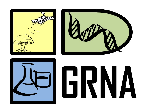Banca de QUALIFICAÇÃO: ANDRESSA JAQUELINE VIANA DE SOUZA
Uma banca de QUALIFICAÇÃO de MESTRADO foi cadastrada pelo programa.STUDENT : ANDRESSA JAQUELINE VIANA DE SOUZA
DATE: 14/06/2022
TIME: 14:00
LOCAL: https://meet.google.com/zrj-esde-ykv
TITLE:
Arecaceae in indigenous territory: ecophysiology, botany and bioeconomy
KEY WORDS:
Palm trees. Macromorphology. Chlorophyll. Secondary metabolites. Ipaupixuna village.
PAGES: 37
BIG AREA: Outra
AREA: Ciências Ambientais
SUMMARY:
In the context of the bioeconomy of the Amazon biome, the botanical family Arecaceae plays a significant role in the economy and daily life, both locally and in the rest of the country, especially when considering the potential for multiple uses of its species. In Brazil, Arecaceae has approximately 390 species, mostly native to the Amazon, where about 41 genera and 290 species are recognized, highlighting locally, nationally and even internationally the genera Euterpe, Bactris, Astrocaryum and Jessenia. The village of Ipaupixuna is located on the plateau of the municipality of Santarém, and together with the villages Açaizal, Amparador and São Francisco da Cavada, they are part of the Munduruku Territory of the Planalto Santareno, in order to distinguish the Munduruku indigenous people from the other regions, having the Munduruku do Planalto as the main activity agroextractivism, removing food, medicinal plants, wood, oils, among others, from the forest, with the forest in its territory being the main means of subsistence of the village, which has been directly threatened by the advance of soybean monoculture. on the Ipaupixuna TI, not yet legally recognized by the federal government. In this context, the present work aims to understand the ecophysiology of palm species with bioeconomic potential that compose the landscape of the indigenous territory of Ipaupixuna, through the measurement of chlorophyll, flavonols, anthocyanins and nitrogen balance in the dry and rainy seasons, and also carry out the macromorphological characterization and use (food, artisanal, medicinal, economic) of the evaluated species. For the ecophysiological characterization, measurements will be carried out in the rainy and dry seasons during the year 2022, where 3 specimens of each species of palm found in the IT will be evaluated through a leaf analyzer (chlorophyll meter) model DUALEX ® ("dual excitation") – Force A, Orsay, France, in a non-destructive way, where the aforementioned indices will be measured and analyzed later in the statistical program Biostat 5.0. The macromorphological characterization will describe the types of roots; composition, color and appearance of the stem; division and coloring of the blade, distribution in the stem and margin of the petiole for leaves; color and arrangement of flowers and type, shape, size and color of the fruits. For the characterization of the use of the species, interviews will be carried out to collect information about the purpose of the use and the parts of the plant used. At the end of the study, it is expected to reach the description of the ecophysiological parameters of the evaluated species and their variation in the dry and rainy season, if any, in addition to the macromorphological characterization and use of the Arecaceae species present in the Ipaupixuna TI.
BANKING MEMBERS:
Externa ao Programa - 1623255 - CRISTINA ALEDI FELSEMBURGH
Presidente - 1178274 - PATRICIA CHAVES DE OLIVEIRA
Externa ao Programa - 2143049 - THAIS ELIAS ALMEIDA




